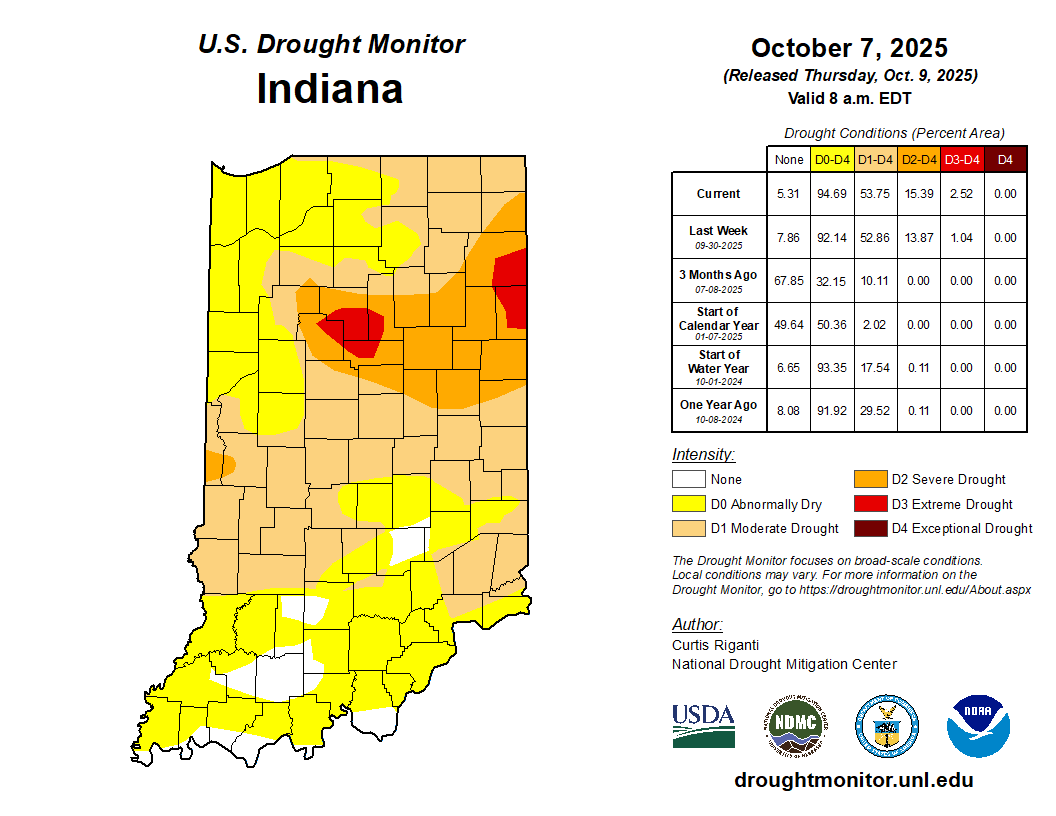
Prior to the rain event October 6-7, 2025, most of Indiana had only received between 0.5” – 2.5” of precipitation over the past 30 days.

Prior to the rain event October 6-7, 2025, most of Indiana had only received between 0.5” – 2.5” of precipitation over the past 30 days.

Fall and drought have been nearly synonymous in recent years; 2025 is no different.

The Midwestern Regional Climate Center (MRCC) has launched a new version of cli-MATE, its main online portal for United States climate data, analyses, statistics, maps, graphics, and other information.
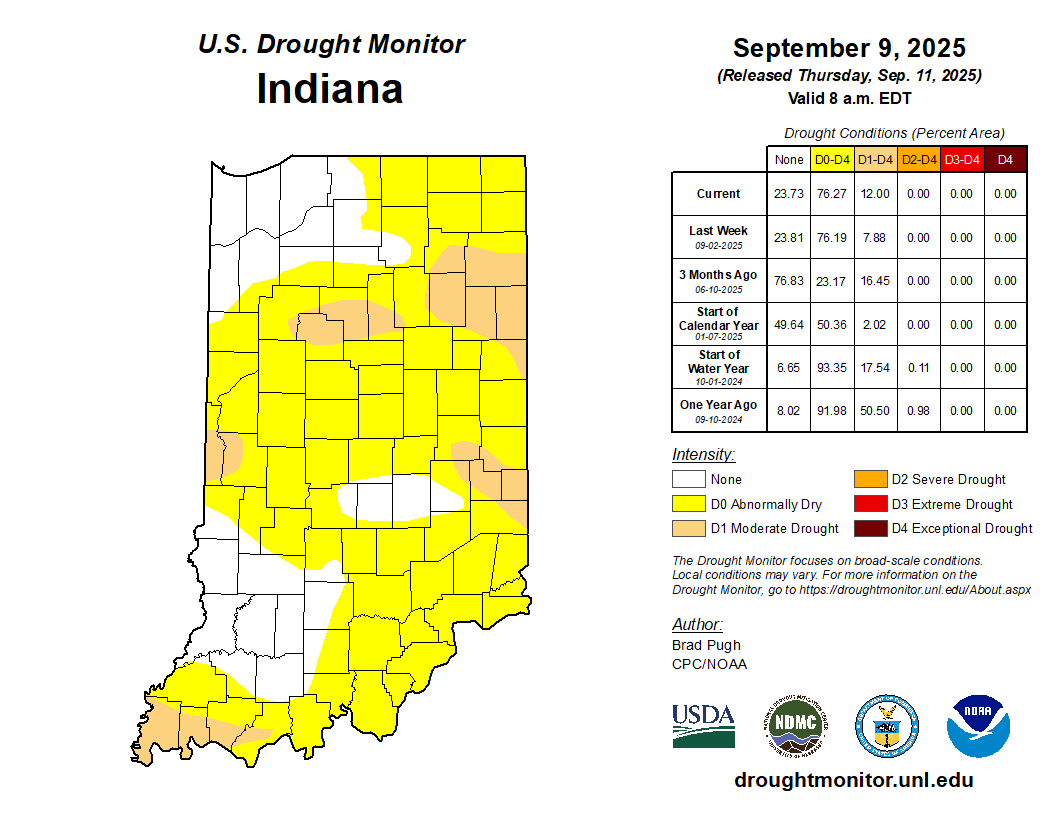
The last week has caused many to struggle with whether to turn the heat on inside.
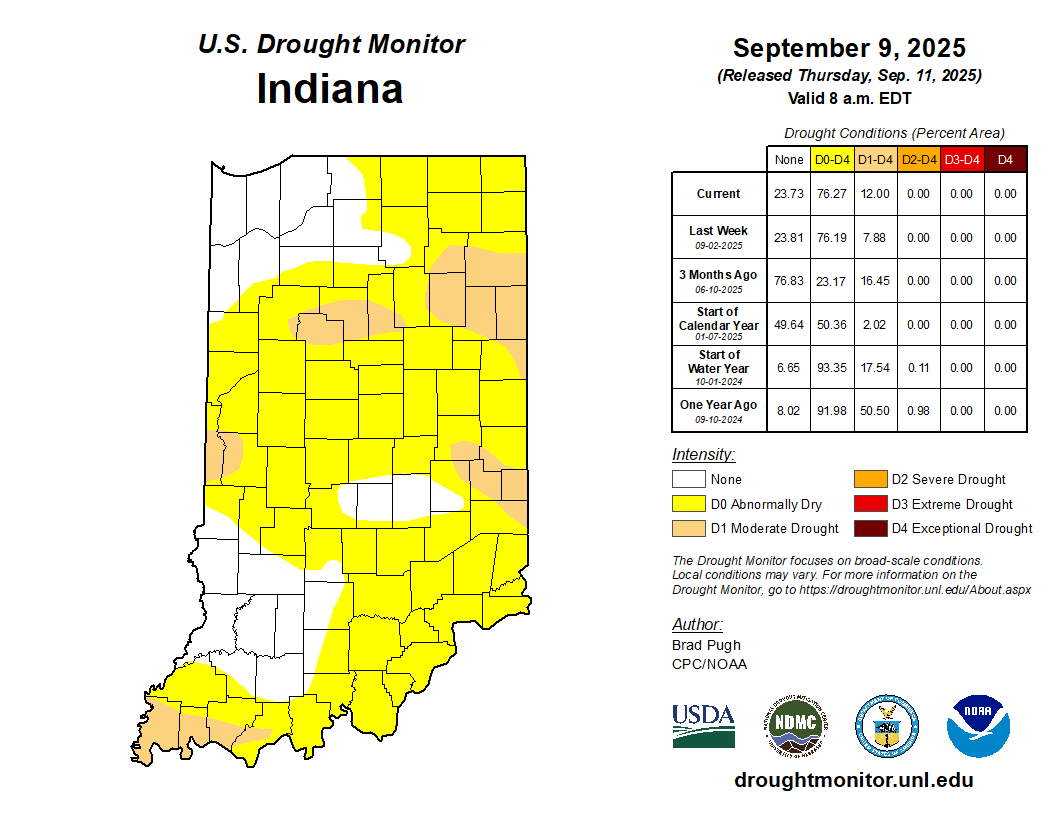
The last week has caused many to struggle with whether to turn the heat on inside. Mornings have been quite chilly, and I am guessing several readers may have also struggled with the decision to wear a jacket as they started their workday. These are tough decisions, no doubt. Several data sources have suggested we have had at least 2 weeks of consecutive below-average daily mean temperatures. While not a record, this is certainly noticeable! Perhaps we are hoping those tomato plants will produce just a few more tomatoes. Is it mum season, already? The good news – for those not quite ready to say goodbye to warm days, not needing coats, and garden delights – is warm temperatures are expected to return. Daily high temperatures are already in the 80s and Indiana is likely to see temperatures in the mid-90s by next week. There is significant confidence that this[Read More…]

If you have any stakes in agriculture, you may have noticed a fairly rapid drying trend as summer has come to a close.
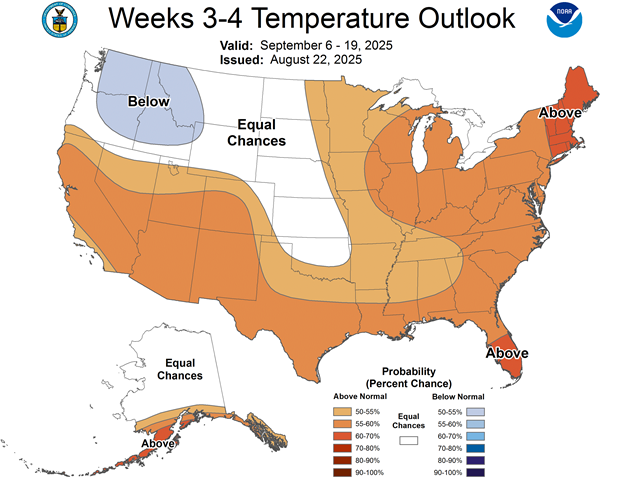
Cooler temperatures are here to stay, for now. Low temperatures have bottomed out in the low to mid-50s across northern Indiana in recent days, with isolated pockets of temperatures in the 40s.
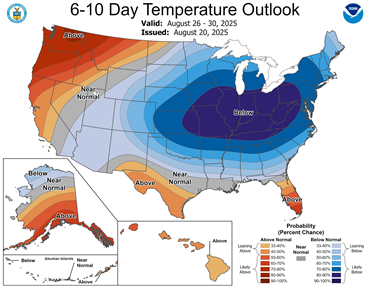
With brute and sudden force, the atmosphere is doing its job: acting like a fluid.

Precipitation over the last 30 days has been very spotty, the usual narrative when dealing with summertime convection.

This article was originally posted on the Ag Climate Dashboard, located at https://ag.purdue.edu/news/2025/08/new-ag-climate-dashboard-makes-climate-resources-more-accessible-for-midwest-farmers.html WEST LAFAYETTE, Ind. — The Midwestern Regional Climate Center (MRCC), with support from the United Soybean Board, has launched the Ag Climate Dashboard — a centralized digital hub offering streamlined access to integrated climate and agricultural data and decision-support tools for producers, advisors and researchers in the Midwest. Designed to support on-farm decision-making, the Ag Climate Dashboard offers up-to-date weather data, National Weather Service forecasts, Climate Prediction Center outlooks, historical records and interactive tools for monitoring crop growth, pest threats, climate anomalies and extreme weather events. The dashboard also connects users to regional ag climate products and a variety of state-specific resources. State-specific pages, such as Indiana’s, link to tools and resources like the Purdue Mesonet and the Indiana State Climate Office. “We want to provide as much clear, well-organized information to producers and advisors as possible[Read More…]
© 2025 Purdue University | An equal access/equal opportunity university | Copyright Complaints | Maintained by Pest&Crop newsletter
If you have trouble accessing this page because of a disability, please contact Pest&Crop newsletter at luck@purdue.edu.